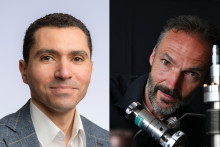Last year, 71 percent of scientific articles by Dutch researchers could be read free of charge by everyone, according to a calculation by the Rathenau Institute. There is, however, an upward trend. In the previous year, 66 percent were published open access.
The government wanted all publicly funded research to be accessible free of charge to everyone by 2020. The reasoning was that if the government funds the research, the taxpayer should be allowed to find out the results.
Change
That requires a change. In the old system publishers make a profit via the subscriptions to their journals, while publication is free. With open access the opposite is the case: reading is free of charge but publication costs the researcher money.
There are all sorts of reasons why the change has still not been made in full. Some researchers prefer publishing in journals with a big reputation and take it for granted that the articles will not be accessible free of charge. And sometimes they are collaborating with researchers in other countries, who opt for a different course.
The Dutch Research Council (NWO), which funds research, announced last month that it is going to monitor open access publication more strictly. In the meantime, universities are negotiating with a growing number of publishers to try and get them on board.
Gold
There are three types of open access: gold, green and bronze. Gold open access is where articles can be read free of charge on journals’ websites, with green open access they are in an online archive of the institution at which the researchers are working. Bronze means that they are only temporarily accessible free of charge, which happens very rarely.

© HOP. Source: Rathenau Institute.
The Netherlands leads the world in the battle for open access. Behind the Netherlands are Norway, Sweden and Finland. Scientists in the United States publish just 45 percent of their articles open access.

© HOP. Source: Rathenau Institute.
More and more articles are appearing open access, but it is hard to make an exact calculation. The Rathenau Institute uses the data in Web of Science, which in turn uses a special database with open access articles (Unpaywall). Although that database is pretty reliable, it is not complete. Moreover, the social sciences and humanities are underrepresented in the Web of Science.







